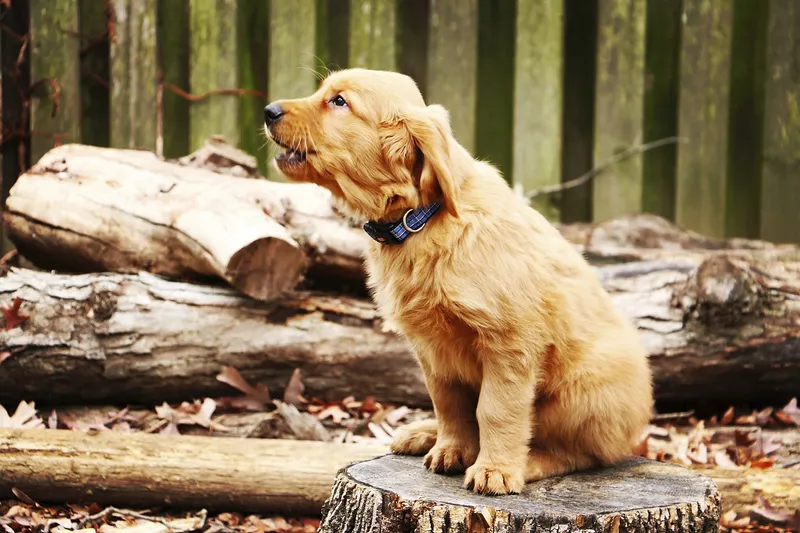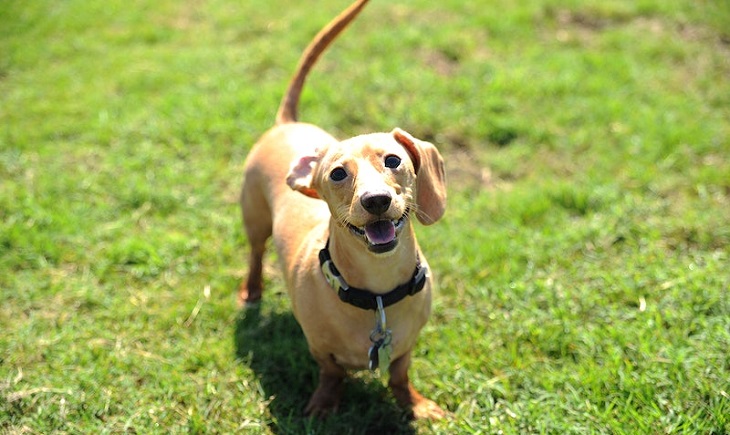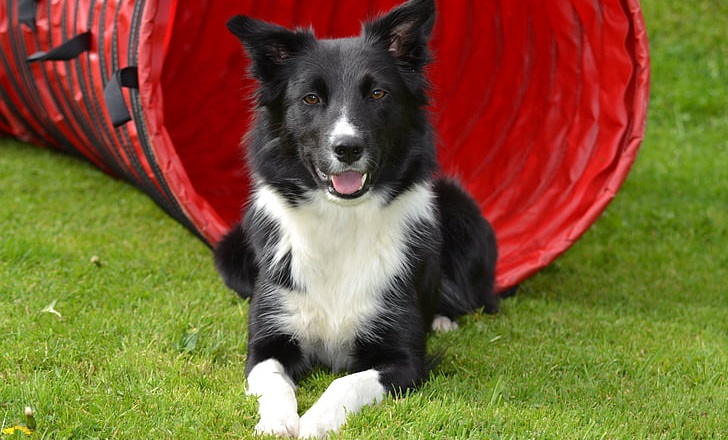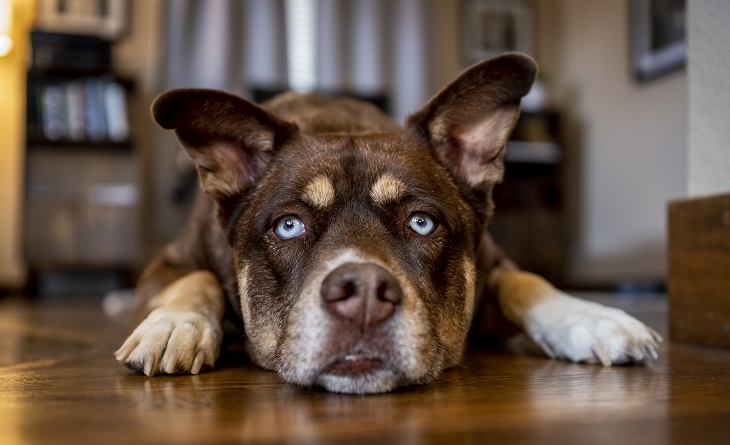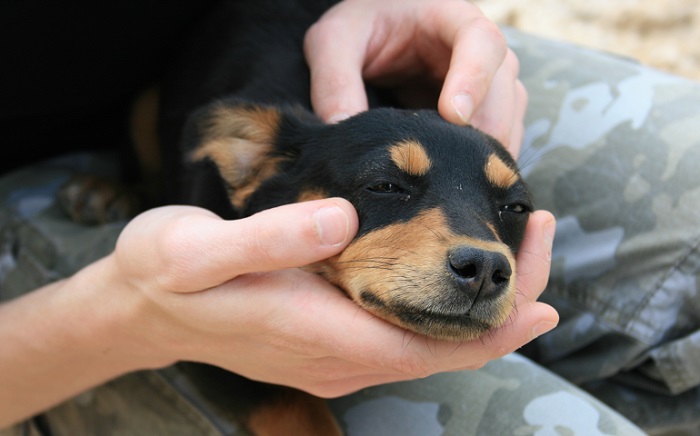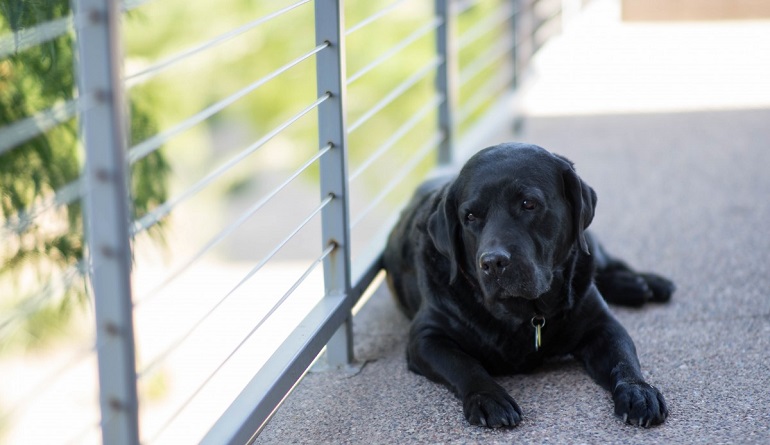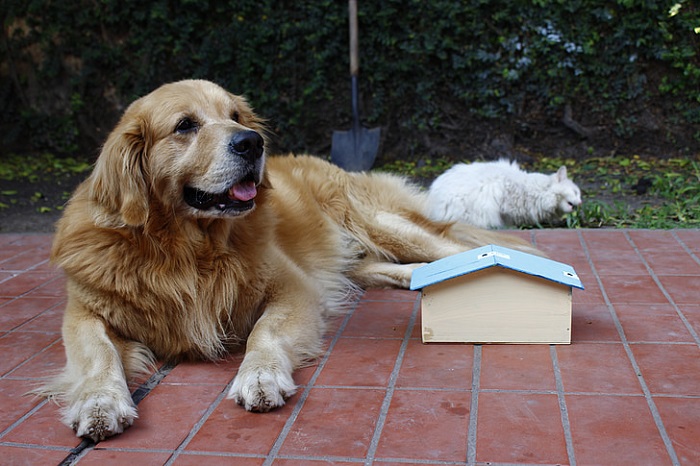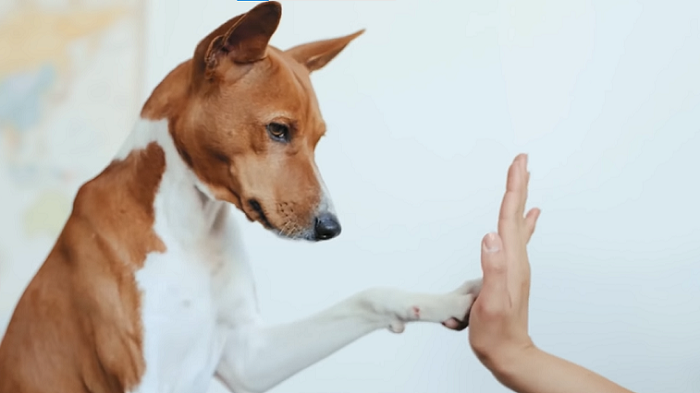Excessive dog whining can be frustrating, but it’s crucial to understand it’s your dog’s way of communicating a need. From anxiety and boredom to pain and attention-seeking, the reasons are varied. Ignoring the whining won’t solve the problem, it’s essential to identify the underlying cause. This guide will delve into the common reasons behind excessive whining and provide practical, positive reinforcement strategies to help you address the issue and restore peace to your home, while strengthening your bond with your furry friend.
Dogs whine for a reason. Like barking or growling, it’s their way of vocalizing their pain, stress, excitement, desires, or anything else.
But if you constantly give in to a dog whining for attention, you are simply reinforcing this method of attention-seeking behavior which often gets worse over time. In fact, it’s not just barking dogs that are considered a nuisance in some municipalities in the US.
The City of Pueblo in Colorado, for example, states that a dog whining, barking, howling, baying, or crying continuously for a period of time in excess of five minutes which is plainly audible from a distance of 25 feet, constitutes a nuisance and can carry a fine of up to $1,000.
The question is, how do you know if your dog is whining for attention or something else, and what can you do about it?
Why Do Dogs Whine?
From favorite toys stuck under the couch to prolonged whines when bored, dogs are smart, fun, complex, and interesting pets. After all, whining and whimpering are instinctual in dogs.
However, it doesn’t take long for most dogs to realize that if they always get what they want in response to their whining, so they’ll be more encouraged to do it.
The first step to understanding why your dog whines are to look at its body language and notice the common reasons associated with this behavior in order to decipher it.
Your Dog Needs or Wants Something
The most obvious reason a dog’s whining is that they want something from you. It could be water, more food, the need to go potty, or even to go for a walk.
Signs that your dog needs or wants something: Whining and scratching on the door to come in if the dog is outside or shifting its eyes between you and the door or the desired object while whining.
Appeasement Behavior
A dog may try to appease another dog or a person when they view some sort of physical threat or aggression being directed at them. Appeasement behaviors in a dog communicate a desire for no confrontation and the threat to stop.
Try to reduce your dog’s appeasement whining by building up its confidence by playing fun and interactive games such as tug and fetch.
Signs of appeasement behavior: Whining and adopting a submissive posture, such as crouching or rolling onto their back, avoiding eye contact, or freezing when touched.
Whining for Attention
Excessive dog whining is not uncommon and can sometimes be triggered by a strong desire for attention. As social beings, dogs are eager to gain as much attention as they can, and attention-seeking whining is one of the other behaviors they adopt.
Unfortunately, this type of behavior often has a history of reinforcement by pet owners who placate their pets, seeking attention.
Signs of whining for attention: Whining excessively to get out of its crate when its small, craving playtime, and from boredom which can lead to other destructive behavior destructive such as chewing.
Greeting Behavior
Dogs mirror our energy and emotions. High-pitched barking, whining, and jumping up on people are all part of their greeting routine. Many dogs like to greet face to face and will adopt the behavior of jumping up to greet people.
But if your dog is overly excited when visitors come to the house, it means they are also experiencing anxiety and stress. Techniques such as kneeing the dog in the chest or squeezing the front paws can lead to increased anxiety and conflict behaviors such as circling and urine leaking because your pet is motivated to greet as well as avoid.
Your Dog is Scared or Stressed
A dog that is stressed or scared may whine. Try addressing your pup’s fear. It could be a loud noise, such as thunder or fireworks, that has them cowering under the stairs, the vacuum cleaner, people, or even other animals.
Never force your dog to get closer to the object or person that is scaring them. Instead, try giving a treat every time your dog looks at what is frightening them. If your dog won’t take the treat, it means the scary object is greater than the reward.
Signs your dog is scared or stressed: Lip licking, cowering, panting, yawning, pacing back and forth, and being clingy.
Anxiety or Pain
Whining in response to anxiety can be difficult to eliminate in your dog unless the root cause for what’s causing the anxiety is discovered.
Separation Anxiety
According to the American Kennel Club (AKC), approximately 14% of dogs experience separation anxiety. This can be triggered by an abrupt change in normal schedules, such as you returning to work after being at home most of the time or an underlying fear of abandonment.
In fact, newly adopted animals may develop a dysfunctional hyper attachment to their new owner. This over-bonding results in them not feeling safe when left alone, and they resort to pup’s whining strategies they were familiar with as puppies when separated from their owners.
Signs your dog is suffering from separation anxiety: Drooling, panting, pacing, won’t stop whining, destructive behavior, restlessness, and urinating or defecating in the house
Injury or Medical Condition
Dogs who have an underlying medical condition, such as poor eyesight, cannot hear properly, or joint pain from arthritis, may feel vulnerable when you are not around. Your presence provides a familiar sense of security, and without it, the dog’s anxiety is triggered, and it vocalizes this by whining.
Additionally, some pets, as they age, develop the first signs of canine dementia and can often experience anxiety. Whining can also be in response to pain. In all these cases, it is best to see a veterinarian as soon as possible to rule out any medical conditions.
Signs your dog is injured: Whining when touched or suddenly upon movement.
Saying “Sorry”
Apologizing to you serves more than just one purpose. If you catch your dog up to no good, they can express moral remorse by way of body language in the hopes of soothing you and preventing you from getting angry.
A dog will watch for your reaction, be it facial or otherwise, to see if you have accepted their apology. Acknowledge and don’t ignore your dog’s apology, and forgive it after showing remorse. This will help your dog feel less insecure and self-conscious and prevent it from becoming withdrawn and anxious.
Signs to look for in saying sorry: Tucking its tail between its legs while whining, hiding in a corner, nuzzling or kicking you, curling against your toes or droopy ears.
What to Do About Excessive Whining
So, how do you stop your dog from whining? If there are no medical issues, you can manage excessive whining with hand targeting, mental stimulation, and exercise.
Try using dramatic body language, such as crossing your arms across your chest, turning away from your dog, and not paying attention until it stops whining. As any eye contact, touching or talking to your dog, even if you’re telling it off, all constitute attention.
You have to indicate to your dog that its excessive attention-seeking whining won’t work. Make it a habit to reward your pet for being quiet with a treat. By doing this, you are teaching your dog to be quiet before receiving your attention, chews, or treats.
How to Teach Hand Targeting
A dog experiences the world through their nose, and where its nose goes, its head and body follow. Hand targeting, or ‘Touch,’ is a great way for training your dog. Whether it’s for obedience behaviors or tricks or even helping redirect anxious or reactive dogs.
Start off by holding your hand out, palm up an inch or two away from your dog. When your dog sniffs your hand and makes contact with it, praise your dog and offer it a treat. Use a marker word such as “Good” or “Yes” to communicate to your dog exactly what they are doing right. Next, repeat the steps until your dog is eagerly bumping your palm with their nose.
Continue practicing until your dog can reliably touch the target with its nose from a few inches away. You can even try and add a verbal cue such as “Touch.” And say it right before you present your hand, then praise and reward your dog when it touches your palm.
Next, move your hand farther away and put some distance between you and the dog until you have built up several feet. Finally, add in some distractions, such as family members in a room, and build on the training from there.
Conclusion
It’s always best to look at the situation objectively and go through the potential reasons why your fur babies are whining before you decide how to proceed. Punishing or scolding your whining dog will not have the desired effect and could even make it anxious or fearful.
It all starts with you as the pet owner. Yes, it’s really hard to resist seeing your puppy whining when it wants out of its crate, but if you give in to the cute furbaby every time, you could very well end up with a whiny adult.
Excessive dog whining stems from various causes, including anxiety, boredom, attention-seeking, or even medical discomfort. Addressing the root cause is key to stopping it. Providing adequate exercise, mental stimulation, and a consistent routine can alleviate boredom and anxiety. Ignoring attention-seeking whining and rewarding quiet behavior can be effective. However, if whining persists or suddenly increases, consulting a veterinarian is crucial to rule out any underlying medical issues. Patience and understanding, combined with appropriate training and environmental adjustments, will help create a calmer, quieter environment for both dog and owner.

